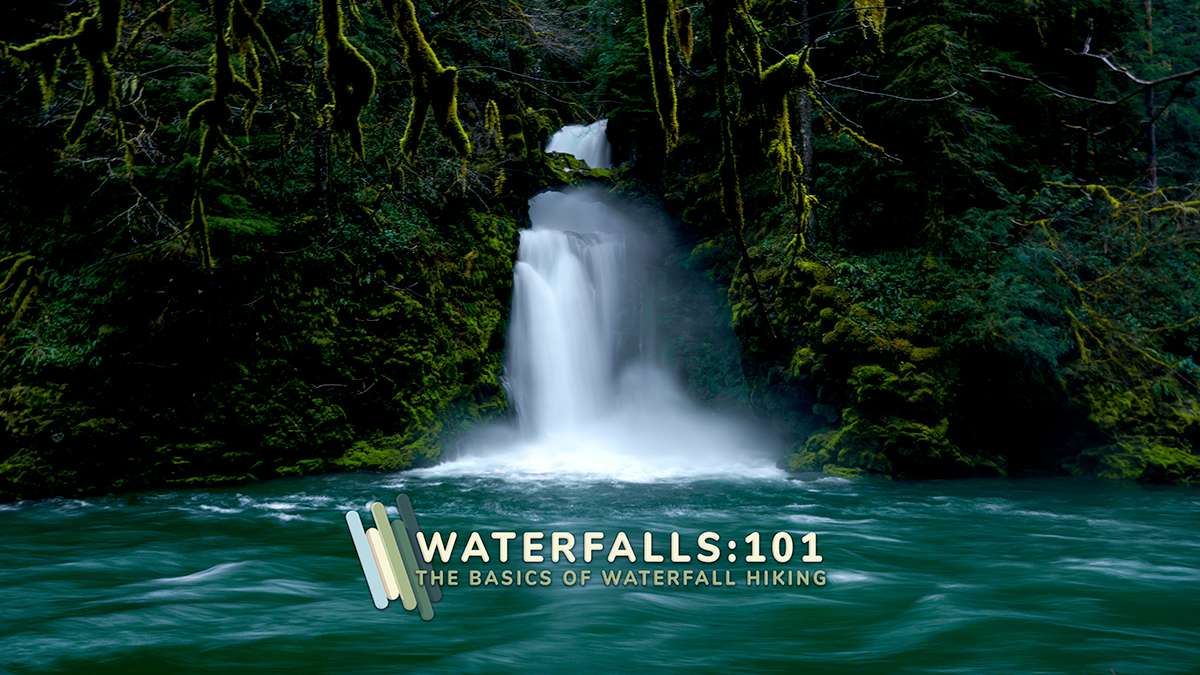Your cart is currently empty!
Waterfalls 101: The Basics of Hiking to Waterfalls
Category:
Tags:
Introduction
Get started on your journey to discovering breathtaking waterfalls with our straightforward guide. Designed for beginners and those seeking local adventures, this guide will equip you with the knowledge to safely and responsibly explore the beauty of waterfalls near you.

Choosing the Right Waterfall
Consider Your Preferences and Capabilities
Selecting the ideal waterfall involves understanding your physical limits, the distance you’re willing to travel, and the type of experience you desire. Factors such as trail length, drive distance, and seasonal variations affect your adventure.
Seasonal Considerations
Waterfalls can vary dramatically between seasons. Spring often brings powerful flows, while autumn offers serene views. Choose your timing based on the type of experience you seek.
Planning Your Adventure
Using Google & Google Maps for Initial Research
Start with a simple “Waterfalls near me” search and explore the results using Google Maps. Look for established trails, green spaces, and public lands that might hide waterfall gems.
Google Maps Features
- Satellite and Terrain View: Get a lay of the land to spot potential access points and trails.
- Trailheads and Nearby Facilities: Locate starting points and necessary amenities like parking.
- User Reviews and Photos: Gain insights from recent visitors to better understand what to expect.
Advanced Tools for Detailed Planning
Google Earth for Terrain Analysis
Use Google Earth for a 3D view of the terrain, helping you identify steep areas, potential waterfall locations, and the best routes to take.
Topographic Maps for Understanding Terrain
Topographic maps show land contours and elevation changes, crucial for identifying waterfall locations and assessing hike difficulty.
Utilizing Mapping Apps and Tools
AllTrails for Trail Discovery
Find trails with waterfalls using filters, read community reviews for up-to-date information, and view photos from other hikers.
Gaia GPS for the Experienced Adventurer
Offers detailed mapping options, custom pin placement, and offline maps, catering to those seeking off-the-beaten-path adventures.
Safety and Responsibility
Preparing for Your Hike
Ensure you have the right gear, understand the trail conditions, and plan for emergencies. Share your plans with someone and respect local regulations and private property boundaries.
Essential Hiking Gear
- Boots: Choose between waterproof and water-resistant based on expected conditions.
- Pants and Jackets: Opt for quick-drying, flexible materials and waterproof jackets for protection.
- Backpacks and Water: Carry a suitable backpack with essentials like water, snacks, and a first-aid kit.
On the Trail
Understanding Waterfall Terrain
Waterfall hikes can present unique challenges not found on standard trails. From slippery rocks to steep inclines around water sources, being prepared and knowing how to navigate these terrains safely is crucial.
Scrambling to Reach Your Destination
- What is Scrambling?: Scrambling is a technique that involves using both your hands and feet to climb rocky terrain that is too steep for hiking but not steep enough to require rope climbing. It’s a common requirement on waterfall hikes, where trails can lead you up or around boulders and steep embankments.
- Safety First: Always assess the risk before attempting to scramble. Look for stable handholds and footholds. Wear gloves to protect your hands and ensure your footwear provides good grip. If a section looks beyond your skill level, don’t risk it.
Navigating Slippery Surfaces
- Approach with Caution: Waterfall areas are notoriously slippery due to moss, algae, and constant moisture. Approach such areas slowly, testing the stability of rocks and logs before putting your full weight on them.
- Use Proper Gear: Wear shoes with aggressive tread for better traction. Consider using trekking poles for additional stability when crossing wet or uneven ground.
Water Crossings and Wet Conditions
Many waterfall hikes involve crossing streams or navigating through wet conditions. Understanding how to safely cross water and prepare for wet trails is essential.
- Assessing Crossings: Look for the narrowest part of the stream with the least water flow for crossing. Use trekking poles or a sturdy stick for balance. Unbuckle your backpack before crossing in case you need to ditch it quickly.
- Wet Trail Gear: In addition to waterproof footwear, wearing quick-dry clothing can make your hike more comfortable. Pack extra socks and, if necessary, water shoes for crossings.
Elevation Gain and Trail Difficulty
Waterfall hikes often involve significant elevation changes over short distances. Understanding how to manage these changes is key to a successful hike.
- Pacing Yourself: On steep inclines, maintain a steady, manageable pace. Take breaks as needed to prevent exhaustion, especially in higher altitudes where oxygen levels are lower.
- Downhill Techniques: Descending steep trails can be hard on your knees and increase the risk of slipping. Lean back slightly, bend your knees, and take slow, measured steps. Use trekking poles to reduce the impact on your joints.
After the Adventure
Sharing Your Experiences
While sharing your journey can inspire others, promote responsible practices and consider the impact of geotagging on sensitive locations.
Conclusion
Exploring waterfalls offers a unique blend of adventure, natural beauty, and the opportunity for personal growth. By choosing the right waterfall, preparing adequately, and respecting the environment, you can enjoy these natural wonders safely and responsibly. Join the community of waterfall enthusiasts and start your journey today.
Enjoy this guide?
Check out our complete guide.

